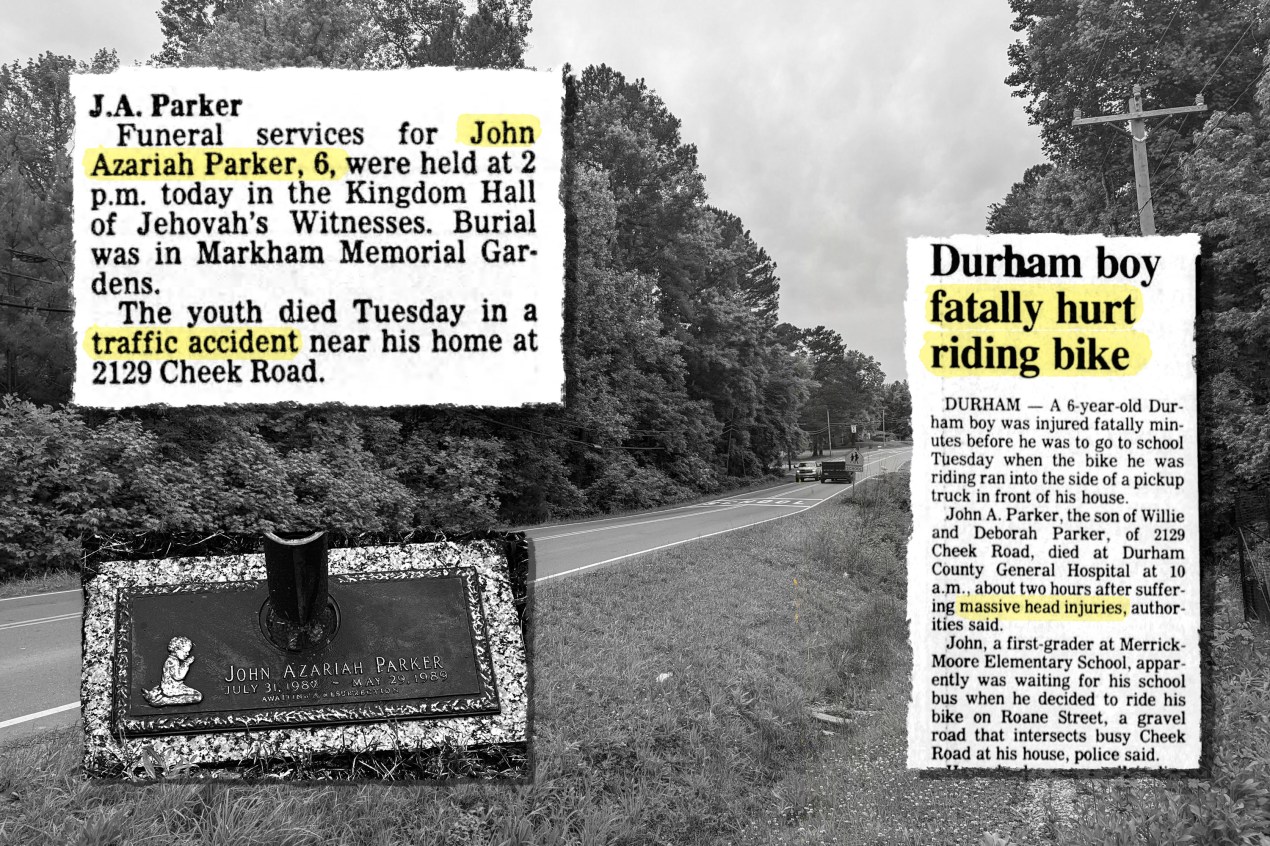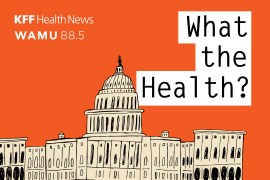DURHAM, N.C. — It’s been 35 years since John Parker died after a pickup collided with the bike he was riding on Cheek Road in east Durham before school. He was 6.
His mother, Deborah Melvin-Muse, doesn’t display photos of him, the second-youngest of six children. His brother’s birthday was the day after the crash — and he hasn’t celebrated it since. An older brother carries a deep sense of guilt because he was looking after John that morning.
And Cheek Road, in a predominantly Black neighborhood, still lacks sidewalks for children to safely make their way to the local elementary school.
This, despite the years community activists and academic researchers have spent pleading with city leaders for safety improvements along the busy thoroughfare with sloping shoulders where John died. Drivers zoom along Cheek Road in the Merrick-Moore neighborhood, which connects downtown Durham to industrial sites and newer suburban developments.
Melvin-Muse moved her family out of the neighborhood after John’s death. “Now when I go down there, I look and see, you know, nothing really changed,” she said. “It still looks the same.”
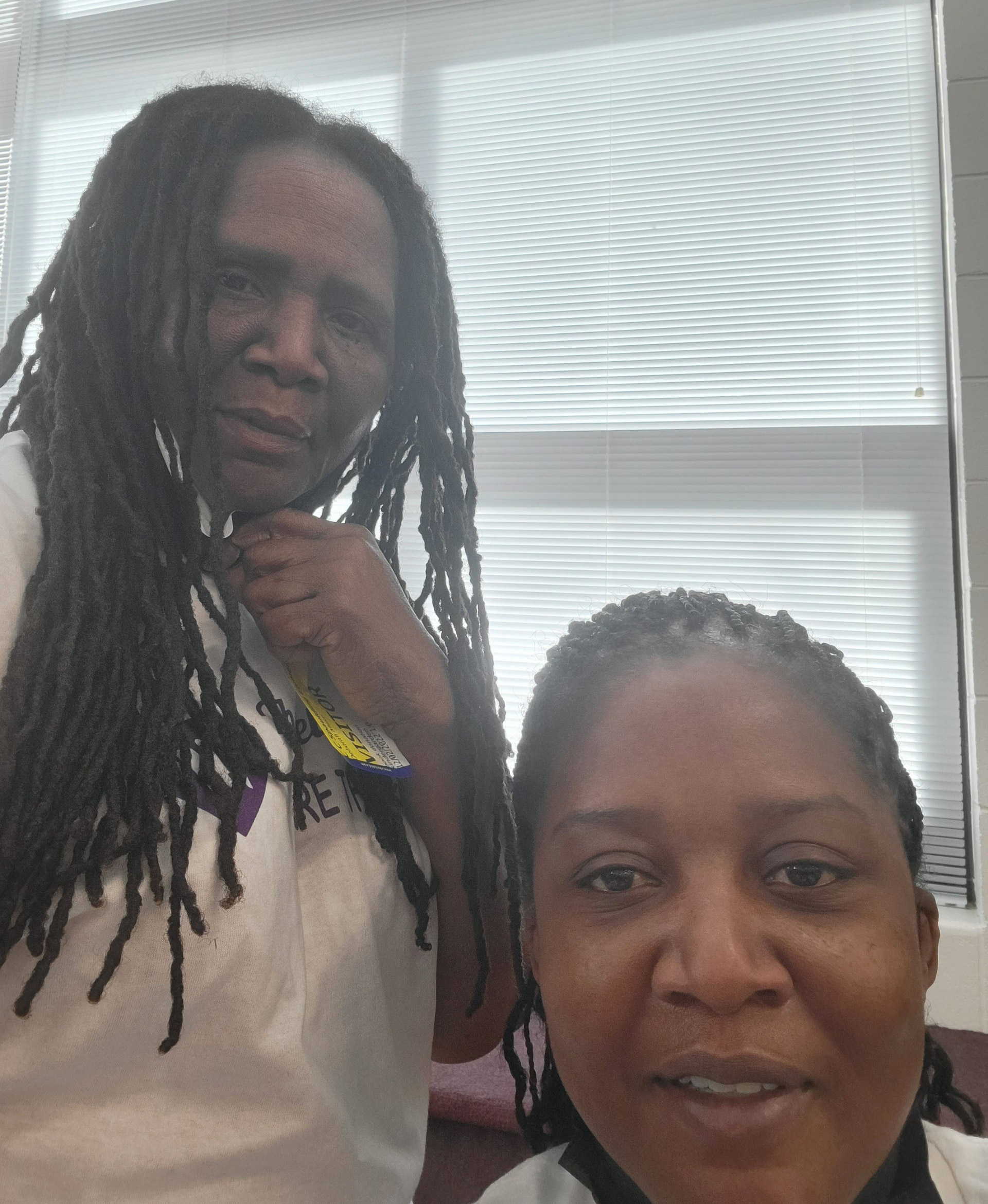
Cheek Road has been “identified as needing improvements” by a local metropolitan planning board, said Erin Convery, Durham’s transportation planning manager, in an email.
“The infrastructure that exists is not well implemented,” concluded a May preliminary report produced by University of North Carolina-Chapel Hill students who collected data on speeding, noise, and air quality along Cheek Road. “Poorly marked crosswalks and inadequately positioned bus stops show a need for safety and accessibility improvements,” the report said.
Data was difficult to collect because “there were areas we didn’t want to get out of our cars because of the dangerous conditions,” said Ari Schwartz, one of the researchers.
In the 1940s, Black military veterans returning from World War II helped establish the Merrick-Moore neighborhood. Since then, residents say they have endured everything from noisy industrial trucks and speeding cars to illegal tire dumping and air pollution that threaten their health and safety.
Pedestrian deaths are highest in formerly redlined areas, neighborhoods where Black people lived because of discriminatory federal mortgage lending practices, research shows. The lack of sidewalks, damaged walkways, and roads with high speed limits are concentrated in these neighborhoods, studies show, creating a little-recognized public health crisis.
Governments invest in roads for people driving through such neighborhoods, but not in safety measures — like sidewalks, crosswalks, traffic circles, and speed bumps — that protect people living in them, researchers and advocates say.
“People will talk about vulnerable communities as if there is a problem with these communities, when in fact it is our systems and policies that have created these failings,” said Darya Minovi, a senior analyst at the Union of Concerned Scientists who studies environmental health and justice.
While the share of Black residents in Merrick-Moore has dropped in recent decades, data shows the neighborhood remains more than 80% Black or Hispanic and households there are typically less well-off than in other parts of the city.
“Local government takes money from the neighborhood but does not invest in it,” said Bonita Green, head of the Merrick-Moore Community Development Corporation and a former City Council candidate.
Green said the community group had documented more than 100 auto crashes along Cheek Road during a recent four-year span and at least three pedestrian deaths before 2020. In this fast-growing city of roughly 300,000, students at Merrick-Moore Elementary and others at a nearby high school sometimes walk along the road — where traffic is heavy, drivers are known to disregard the 25-mph speed limit, and the shoulders slope steeply.
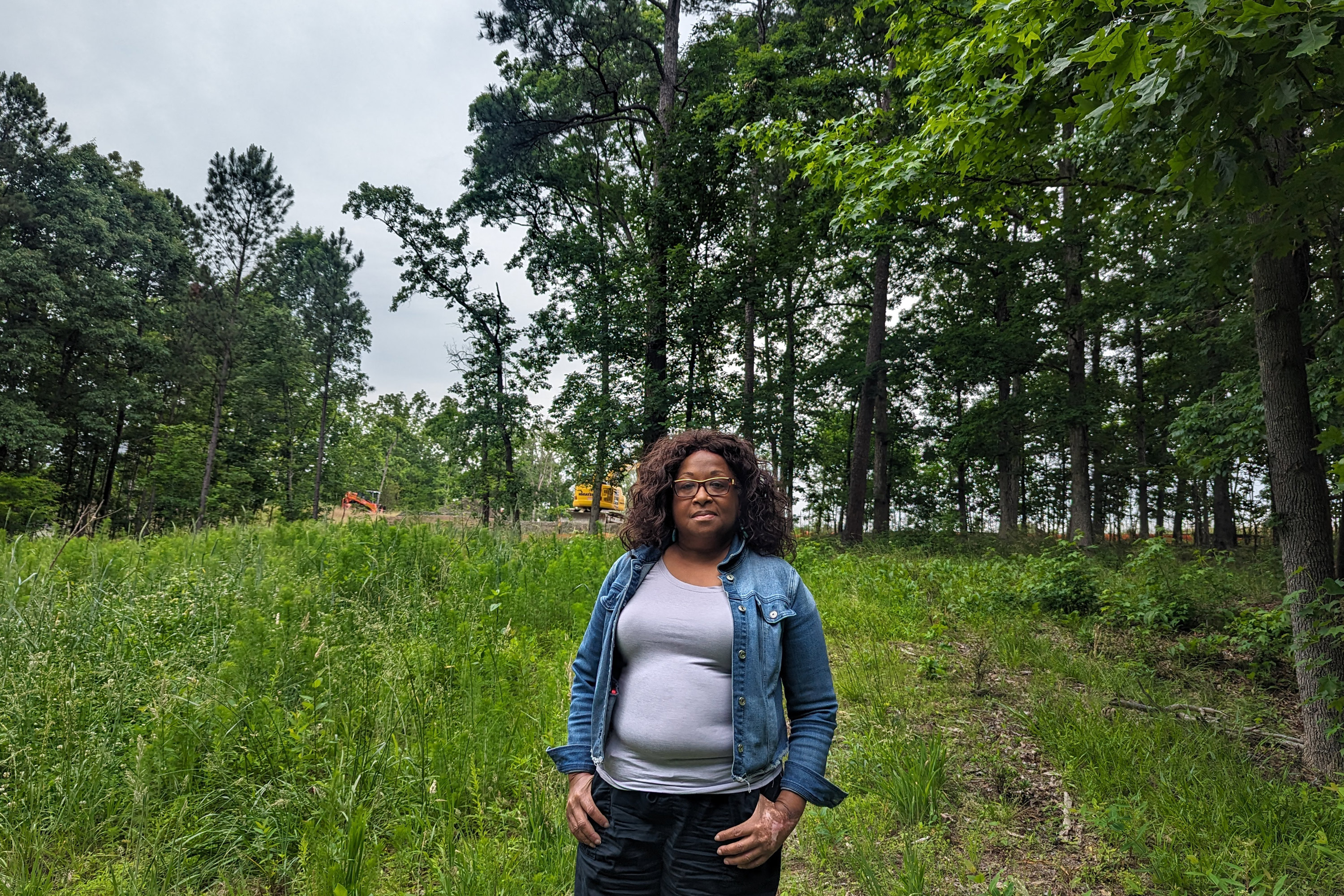
When longtime residents like Ponsella Brown see kids walking there or hear about another accident, they remember the death of John Parker, who was in first grade.
“I just cringe,” said Brown, who worked as an administrative assistant at Merrick-Moore Elementary when John died. “Every time it comes up, it’s like really vivid in my mind.”
On the day John died, someone rushed into the office and said a child had been hit by a car on Cheek Road, recalled Brown, who said she ran to the scene.
“I remember the way his head was turned. I remember the spot of blood on his face. Like one speck of blood,” said Brown, who also works for the Merrick-Moore Community Development Corporation and is now a counselor at another school.
Traffic on Cheek Road is expected to increase as the population grows in Durham and surrounding areas, according to a separate April report from UNC graduate students. It noted that during the morning school drop-off time, many cars driving on Cheek Road don’t observe the posted speed limits.
Under an equity program meant to reverse the harm done to communities of color, Convery said, Durham officials are considering traffic-calming measures, including traffic circles, speed cushions, and high-visibility crosswalks.
“We’re open to future conversations that will help us achieve zero traffic deaths and injuries,” Convery said.
Yet a 2017 plan that prioritized more than 600 sidewalk projects based on safety, equity, and demand did not include Merrick-Moore Elementary School on Cheek Road, she said.
A strike by Durham school bus drivers this year only heightened concerns about the lack of safe walking routes for the 650 students who attend the elementary school, according to the April report.
Melvin-Muse, now 67, was at work when she got a call that John had been struck by a truck in front of their house. Before she left home that late May morning in 1989, she put her older kids in charge of the younger ones. They passed the time before school riding bicycles near their house, a few blocks from Merrick-Moore Elementary School, when the accident occurred.
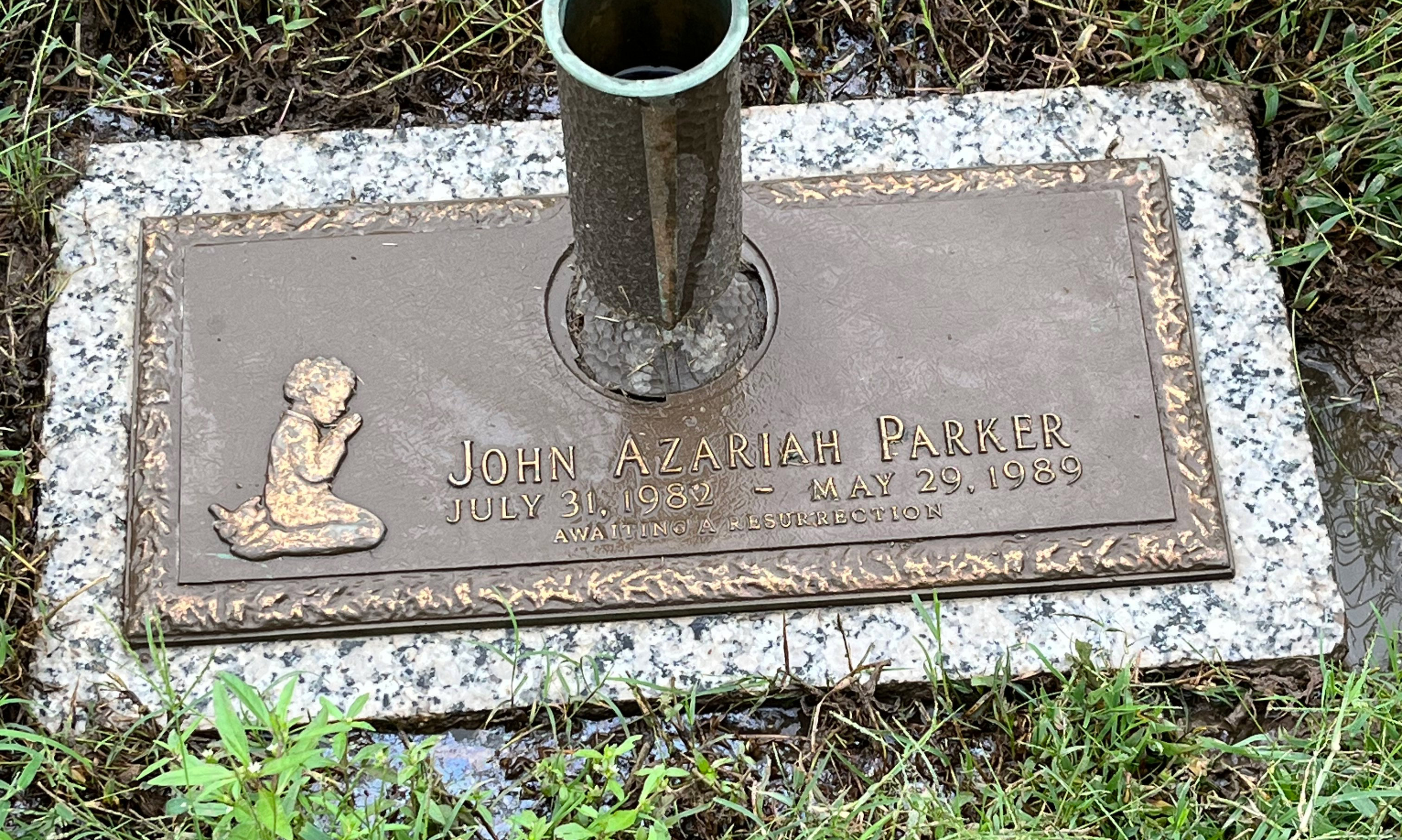
John died two months shy of his 7th birthday from “massive head injuries,” according to The (Raleigh) News & Observer, which wrote about his death on Cheek Road at the time. John was buried in Markham Memorial Gardens, according to his obituary in The (Durham) Herald-Sun.
Melvin-Muse said his death sent the family into a tailspin of grief, anger, and regret.
“It caused a big rip in the family,” Melvin-Muse said.
Melvin-Muse and John’s father later divorced. She said she paid for therapy for her other kids, but they still got in trouble at school and two of her children ended up living in a home for kids with behavioral health issues. “It was just a bad time,” she said.
Years after the accident, Melvin-Muse said, she worked up the courage to call the driver who had hit her son. When he answered, he didn’t recognize her name, or John’s, fueling her rage, she recalled.
“I wanted revenge. An eye-for-an-eye kind of thing,” she said. “And I plotted to take him out the same way my son was taken out.”
She went so far as to get a job where he worked, the Durham County tax department, only to find he had left a week before she started.
“God knows what was in my heart and what I planned on doing,” Melvin-Muse said. “God moved him out of that place before I got there.”
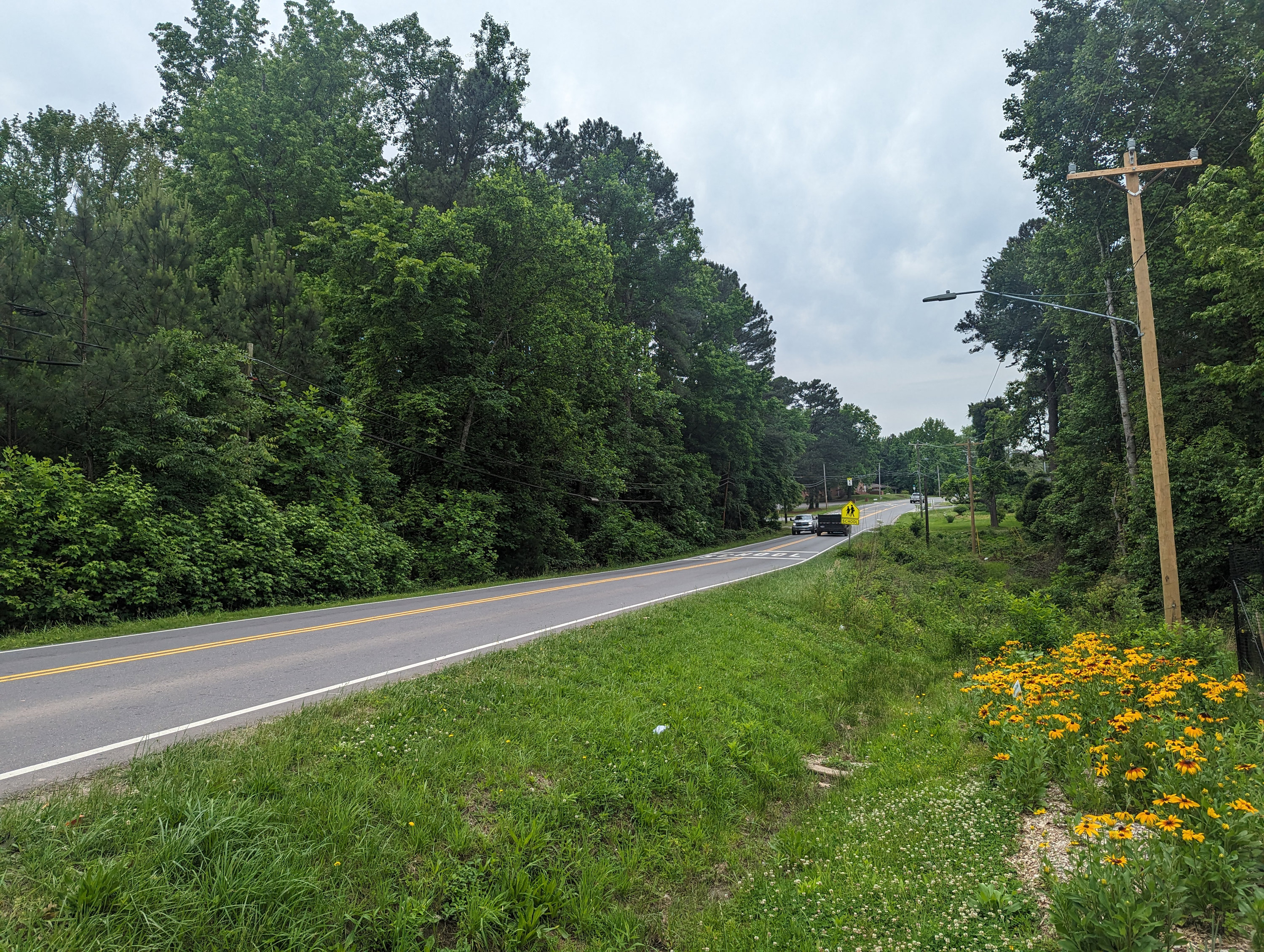
Healthbeat is a nonprofit newsroom covering public health published by Civic News Company and KFF Health News. Sign up for its newsletters here.



